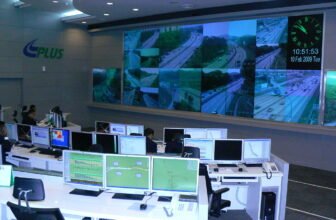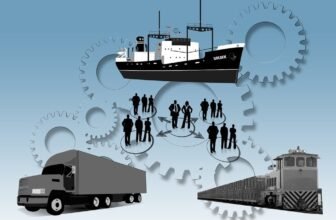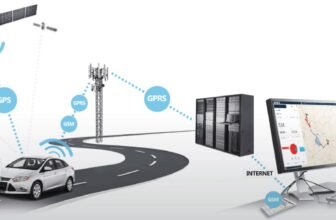
Revolutionizing Agriculture with Satellite Technology
Enhancing Crop Health, Yield Prediction, and Irrigation Optimization
Agriculture has undergone a significant transformation over the past few decades, largely driven by technological advancements. One of the most impactful innovations in modern agriculture is the use of satellite technology. Satellites provide farmers with real-time data and analytics, enabling them to monitor crop health, predict yields, and optimize irrigation. These applications enhance productivity, reduce waste, and contribute to sustainable farming practices.
In this article, we explore how satellite technology is revolutionizing agriculture, the benefits it offers, and the future prospects of this rapidly evolving field.
The Role of Satellite Technology in Agriculture
Satellite technology in agriculture primarily relies on remote sensing and Geographic Information System (GIS) data to provide insights into various aspects of farming. Through high-resolution imagery and data analysis, satellites help farmers make informed decisions regarding their crops and land management practices. The three key areas where satellite technology is making a significant impact include:
- Monitoring Crop Health
- Predicting Yields
- Optimizing Irrigation
1. Monitoring Crop Health
Crop health monitoring is one of the most valuable applications of satellite technology. By using remote sensing techniques such as Normalized Difference Vegetation Index (NDVI), Enhanced Vegetation Index (EVI), and thermal imaging, satellites can detect changes in vegetation health, disease outbreaks, and pest infestations.
- Early Detection of Crop Stress: Satellite imagery allows farmers to detect stress in crops caused by drought, nutrient deficiencies, or disease before it becomes visible to the naked eye. This enables them to take corrective measures, such as adjusting fertilizers or pesticides, to prevent yield losses.
- Disease and Pest Management: Satellites help in identifying areas affected by pests or diseases. By pinpointing affected zones, farmers can implement targeted pest control strategies, reducing the overuse of pesticides and promoting environmentally friendly practices.
- Real-Time Monitoring: Regularly updated satellite images help farmers track crop growth and development, ensuring that crops are growing as expected and allowing for adjustments in management practices if necessary.
2. Predicting Yields
Yield prediction is crucial for both farmers and agricultural policymakers. Accurate yield forecasts help farmers plan harvests, optimize resource allocation, and make informed decisions about storage and sales. Satellite data plays a vital role in improving yield predictions through:
- Analyzing Vegetation Indices: Using NDVI and EVI data, scientists and agronomists can assess plant health and predict how much a crop will yield. These indices measure chlorophyll content and vegetation density, which are directly linked to plant productivity.
- Weather Data Integration: Satellites track weather patterns, including temperature, rainfall, and humidity levels, all of which influence crop growth. By combining historical weather data with real-time satellite imagery, farmers can estimate expected yields more accurately.
- Machine Learning and AI: Advanced analytics tools leverage artificial intelligence (AI) and machine learning algorithms to analyze satellite data and predict crop yields with greater precision. These predictive models help in strategic planning for food supply chains and market forecasting.
3. Optimizing Irrigation
Water management is a critical aspect of agriculture, especially in regions prone to drought or water scarcity. Satellite technology helps farmers optimize irrigation systems by providing precise data on soil moisture levels, evapotranspiration rates, and water distribution.
- Soil Moisture Mapping: Satellites equipped with synthetic aperture radar (SAR) and passive microwave sensors measure soil moisture content. Farmers can use this data to determine when and where to irrigate, ensuring efficient water use and preventing overwatering.
- Evapotranspiration Monitoring: Evapotranspiration, the process of water loss from soil and plants, is a key factor in irrigation management. Satellites track evapotranspiration rates, helping farmers schedule irrigation based on actual plant water needs rather than fixed schedules.
- Precision Irrigation: By integrating satellite data with GPS-guided irrigation systems, farmers can apply water more efficiently, reducing water waste and improving crop health. Precision irrigation ensures that each part of the field receives the right amount of water at the right time.
Benefits of Satellite Technology in Agriculture
The integration of satellite technology into agriculture offers numerous benefits, including:
- Increased Efficiency: Farmers can manage large areas of farmland more efficiently by relying on satellite data instead of manual field inspections.
- Cost Savings: Early detection of crop stress and precision irrigation reduce input costs related to fertilizers, pesticides, and water usage.
- Environmental Sustainability: Optimized resource use leads to lower environmental impact, reducing water wastage, chemical runoff, and greenhouse gas emissions.
- Improved Food Security: Accurate yield predictions and better resource management help ensure stable food production and supply.
- Data-Driven Decision Making: Farmers can make informed decisions based on real-time and predictive data, leading to better productivity and profitability.
Challenges and Limitations
Despite the many benefits, there are challenges associated with using satellite technology in agriculture:
- High Initial Costs: Accessing high-resolution satellite imagery and integrating advanced analytics tools can be expensive for small-scale farmers.
- Technical Expertise: Farmers need training to interpret satellite data effectively and implement precision agriculture techniques.
- Cloud Cover Issues: Optical satellite imagery can be affected by cloud cover, limiting its effectiveness in certain weather conditions.
- Data Processing: The vast amounts of data generated by satellites require advanced computational resources and expertise to analyze and extract actionable insights.
Future Prospects
The future of satellite technology in agriculture looks promising, with ongoing advancements in remote sensing, artificial intelligence, and data analytics. Key trends to watch include:
- Higher Resolution Imagery: The development of more advanced satellites with higher resolution sensors will improve the accuracy of agricultural monitoring.
- AI and Machine Learning Integration: AI-powered predictive models will continue to enhance yield forecasting and precision farming.
- Affordable Access for Small Farmers: Government initiatives and private sector investments are making satellite data more accessible to smallholder farmers worldwide.
- IoT and Smart Farming: The combination of satellite data with Internet of Things (IoT) devices will lead to fully automated and data-driven farming systems.
- Climate Resilience: Satellites will play a crucial role in helping farmers adapt to climate change by providing insights on changing weather patterns and soil conditions.
Satellite technology is revolutionizing agriculture by enabling farmers to monitor crop health, predict yields, and optimize irrigation with unprecedented accuracy. These advancements contribute to increased productivity, cost savings, and environmental sustainability. While challenges such as high costs and technical expertise remain, ongoing innovations in satellite imaging and AI-driven analytics are making precision agriculture more accessible. As technology continues to evolve, satellite-based agriculture will play a vital role in ensuring global food security and sustainable farming practices for future generations. image/pexels





